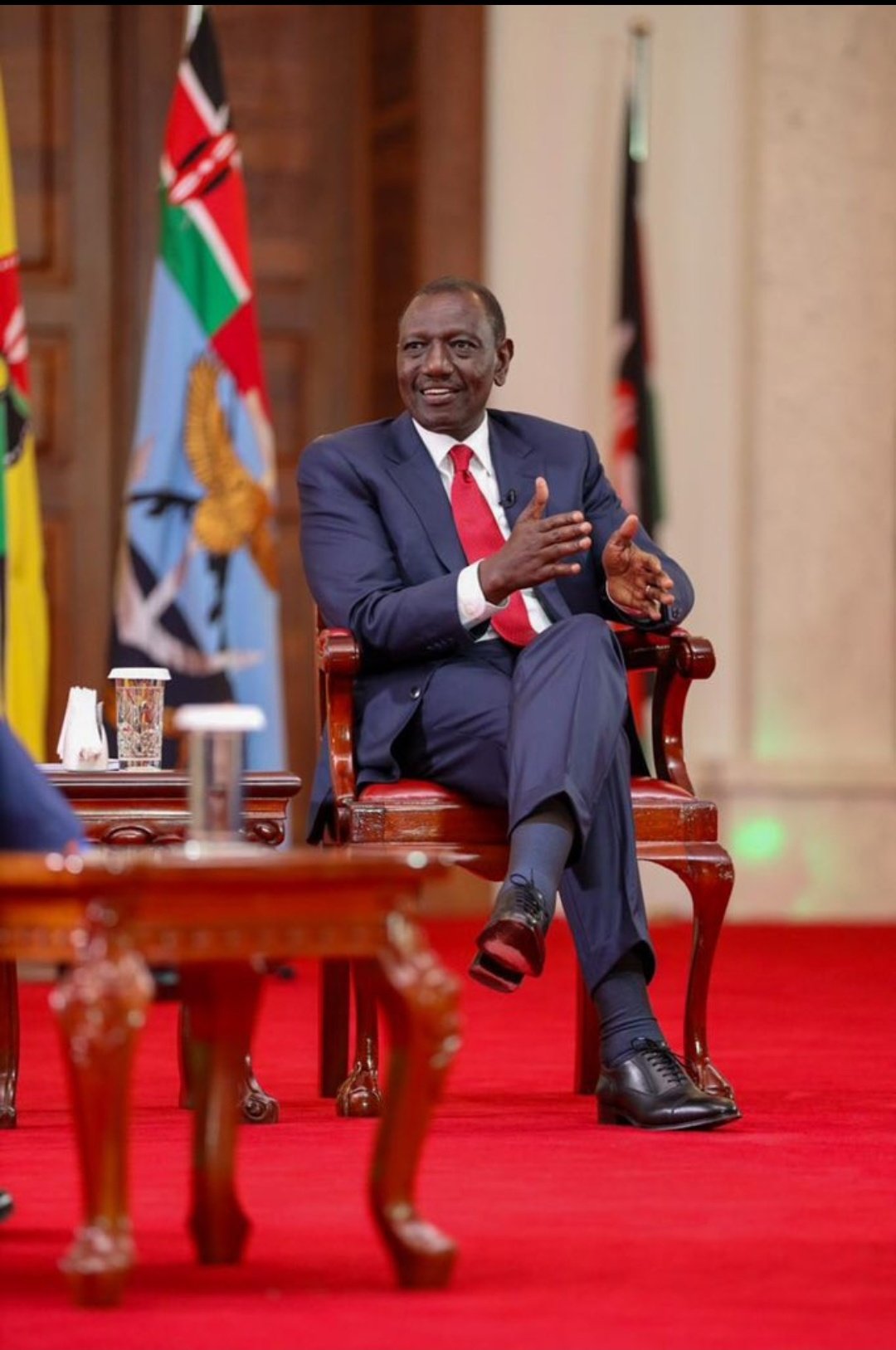
Nairobi, June 5, 2024 — In a year marked by both challenges and triumphs, Kenya’s economy has demonstrated remarkable resilience and growth. The latest Kenya Economic Update (KEU), titled “Fostering Trade for Robust Growth and Dynamic Job Creation,” provides a comprehensive analysis of the country’s economic performance in 2023 and offers projections for 2024. This 29th edition of the KEU, launched today, sheds light on the factors driving Kenya’s economic trajectory and the policy measures shaping its future.


Economic Growth: A Tale of Resilience
Kenya’s real GDP growth accelerated to an impressive 5.6% in 2023, surpassing the previous year’s growth of 4.9%. This acceleration is particularly noteworthy given the challenging global economic environment and domestic pressures faced by the country. The growth was primarily driven by two key sectors:
- Agriculture: The sector experienced a significant recovery, thanks to improved weather conditions. After facing drought-related challenges in previous years, the agricultural sector’s resurgence played a crucial role in boosting overall economic growth.
- Services: This sector continued to be a strong contributor to growth, with tourism and financial services leading the way. The revival of international travel post-pandemic and the ongoing digitalization of financial services have been key factors in this sector’s performance.
However, it’s important to note that the outlook for 2024 suggests a slight moderation in growth. GDP growth is expected to slow down to 5.0%, reflecting both domestic and global economic factors that we will explore in detail later in this analysis.
Macroeconomic Environment: Navigating Challenges
The year 2023 presented a complex macroeconomic landscape for Kenya, characterized by several interrelated factors:
- Tight Fiscal and Monetary Policies: The government and the Central Bank of Kenya maintained a cautious stance, balancing the need for economic stimulus with inflation control and fiscal responsibility.
- Elevated Inflation: Like many countries globally, Kenya grappled with inflationary pressures, affecting both consumer purchasing power and business operations.
- Rising Debt Service Obligations: The country’s debt burden continued to be a significant concern, with increasing portions of government revenue being directed towards debt servicing.
- High Borrowing Costs: Global financial conditions led to increased borrowing costs, making it challenging for Kenya to access international capital markets on favorable terms.
- Sharp Depreciation of the Shilling: The Kenyan Shilling faced significant pressure against major currencies, impacting import costs and overall economic stability.
Despite these challenges, the Kenyan economy demonstrated remarkable resilience. The government’s strategic policy measures played a crucial role in bolstering overall macroeconomic stability, setting the stage for continued growth and development.
Government’s Strategic Moves: The Eurobond Buyback
One of the most significant developments in early 2024 was the Government of Kenya’s successful partial buyback of the Eurobond in February. This move was a game-changer in several ways:
- Easing Liquidity Constraints: The buyback significantly reduced the immediate liquidity pressures for the year, providing the government with more fiscal breathing room.
- Market Confidence: The successful execution of this financial maneuver instilled a sense of calm in the markets, both domestic and international.
- Improved Macroeconomic Outlook: The buyback, combined with other policy measures, has led to improved macroeconomic conditions.
- Re-access to International Financial Markets: Perhaps most importantly, this move has paved the way for Kenya to regain access to international financial markets, which is crucial for future economic growth and development projects.
As Keith Hansen, World Bank Country Director for Kenya, noted, “The improved macroeconomic conditions, and re-access to international financial markets, are anticipated to boost investor confidence and support economic growth in the coming years.”
Sectoral Analysis: Drivers of Growth
To fully understand Kenya’s economic performance in 2023 and the projections for 2024, it’s essential to delve deeper into the key sectors driving this growth:
1. Agriculture
The agricultural sector’s recovery in 2023 was a significant contributor to overall economic growth. Several factors played a role in this resurgence:
- Improved Weather Conditions: After facing drought conditions in previous years, 2023 saw more favorable rainfall patterns, benefiting both crop production and livestock farming.
- Government Support: Initiatives such as subsidized fertilizer programs and irrigation projects helped boost agricultural productivity.
- Export Performance: Key export crops like tea, coffee, and horticultural products saw improved demand in international markets.
- Technological Adoption: Increased use of mobile technology for weather forecasting, market information, and financial services has empowered farmers and improved efficiency in the sector.
Looking ahead to 2024, the agricultural sector’s performance will be crucial in determining overall economic growth. Continued investment in climate-resilient farming practices and value addition in agricultural products will be key focus areas.
2. Services Sector
The services sector, particularly tourism and financial services, played a pivotal role in Kenya’s economic growth in 2023:
Tourism
- Recovery from Pandemic: With global travel restrictions easing, Kenya saw a significant rebound in international tourist arrivals.
- Domestic Tourism: The government’s efforts to promote domestic tourism helped cushion the sector during periods of lower international travel.
- Diversification: Kenya’s efforts to diversify its tourism offerings beyond traditional safaris, including eco-tourism and cultural experiences, have attracted new segments of travelers.
- Infrastructure Improvements: Ongoing investments in transport infrastructure, including the expansion of regional airports, have improved accessibility to various tourist destinations.
Financial Services
- Digital Banking: The continued growth of mobile banking and fintech solutions has expanded financial inclusion and driven growth in the sector.
- Regulatory Environment: Proactive regulatory measures have fostered innovation while maintaining stability in the financial sector.
- Cross-border Expansion: Kenyan banks have continued to expand their presence in other East African countries, driving growth and regional integration.
- Green Finance: There’s a growing focus on sustainable and green finance, aligning with global trends and attracting international investors.
3. Manufacturing
While not highlighted in the initial update, the manufacturing sector plays a crucial role in Kenya’s economic diversification efforts:
- Local Content Policies: Government initiatives to promote the use of locally manufactured goods have supported the sector’s growth.
- Export-Oriented Manufacturing: The African Continental Free Trade Area (AfCFTA) agreement presents new opportunities for Kenyan manufacturers to access wider markets.
- Technology Adoption: Increased adoption of automation and digital technologies is improving efficiency and competitiveness in the sector.
- Challenges: However, the sector continues to face challenges such as high energy costs and competition from imported goods.
Trade Dynamics: A Key Focus Area
The title of the 29th Kenya Economic Update, “Fostering Trade for Robust Growth and Dynamic Job Creation,” underscores the critical role of trade in Kenya’s economic strategy. Let’s explore the key aspects of Kenya’s trade dynamics:
1. Regional Integration
Kenya’s position within the East African Community (EAC) and its participation in the African Continental Free Trade Area (AfCFTA) are central to its trade strategy:
- EAC Common Market: The implementation of the EAC Common Market Protocol has facilitated the free movement of goods, services, and factors of production within the region.
- AfCFTA Opportunities: The AfCFTA presents vast opportunities for Kenyan businesses to access a market of over 1.3 billion people across the continent.
- Cross-Border Infrastructure: Ongoing investments in cross-border infrastructure, such as the Standard Gauge Railway (SGR) and improvements to the Northern Corridor, are enhancing regional trade connectivity.
2. Global Trade Relations
Kenya’s efforts to diversify its trading partners and strengthen existing relationships have been crucial:
- EU Partnership: The Economic Partnership Agreement (EPA) with the European Union continues to provide preferential access for Kenyan exports to EU markets.
- US Trade Relations: Ongoing negotiations for a Free Trade Agreement with the United States could open up significant opportunities for Kenyan exporters.
- Asian Markets: Strengthening trade ties with Asian countries, particularly China and India, has diversified Kenya’s export markets.
3. Export Promotion and Diversification
To drive economic growth through trade, Kenya has been focusing on:
- Value Addition: Encouraging the processing and value addition of primary products before export to capture more value in the global supply chain.
- Services Exports: Promoting the export of services, including IT and business process outsourcing, leveraging Kenya’s skilled workforce and digital infrastructure.
- Export Promotion Agencies: Strengthening the capacity of export promotion agencies to support businesses in accessing international markets.
4. Trade Facilitation
Efforts to streamline trade processes and reduce barriers have been ongoing:
- Single Window System: The implementation of the National Electronic Single Window System has simplified trade procedures and reduced the time and cost of cross-border trade.
- One-Stop Border Posts: The establishment of one-stop border posts with neighboring countries has significantly reduced transit times for goods.
- Digital Trade Platforms: The adoption of digital platforms for trade documentation and customs processes has improved efficiency and transparency.
Job Creation: The Ultimate Goal
The emphasis on “Dynamic Job Creation” in the KEU title highlights the crucial link between economic growth, trade, and employment. Kenya, like many developing countries, faces the challenge of creating enough quality jobs for its growing, young population. Let’s explore the job creation landscape:
1. Formal Sector Employment
- Services Sector Growth: The expansion of the services sector, particularly in financial services and IT, has created new formal employment opportunities.
- Manufacturing Jobs: Government initiatives to boost the manufacturing sector aim to create more stable, formal sector jobs.
- Public Sector Employment: While the government has been cautious about expanding public sector employment, strategic hires in key areas continue to contribute to job creation.
2. Informal Sector and SMEs
- SME Support: Recognizing the role of Small and Medium Enterprises (SMEs) in job creation, the government has implemented various support programs, including access to finance and capacity building.
- Formalization Efforts: Initiatives to encourage the formalization of informal businesses aim to improve job quality and social protection for workers.
- Digital Economy: The growth of the digital economy has created new opportunities for entrepreneurship and self-employment, particularly among youth.
3. Agriculture and Rural Employment
- Agribusiness Development: Efforts to promote value addition in agriculture and develop agribusiness value chains are creating off-farm employment opportunities in rural areas.
- Youth in Agriculture: Programs targeting youth engagement in agriculture aim to make the sector more attractive and productive.
4. Skills Development and Education
- TVET Focus: Increased emphasis on Technical and Vocational Education and Training (TVET) aims to align skills development with market demands.
- Industry-Academia Linkages: Strengthening connections between educational institutions and industries is helping to reduce skills mismatches in the labor market.
5. Gig Economy and Flexible Work
- Digital Platforms: The rise of digital platforms for ride-hailing, delivery services, and freelance work has created flexible employment opportunities, particularly for urban youth.
- Regulatory Framework: Developing an appropriate regulatory framework for the gig economy to balance flexibility with worker protection is an ongoing challenge.
Challenges and Risks
While Kenya’s economic performance in 2023 was impressive, several challenges and risks could impact growth in 2024 and beyond:
1. Global Economic Uncertainty
- Global Slowdown: A potential slowdown in major economies could impact demand for Kenyan exports and reduce foreign investment inflows.
- Geopolitical Tensions: Ongoing global conflicts and trade tensions could disrupt supply chains and affect commodity prices.
2. Climate Change and Environmental Risks
- Agricultural Vulnerability: The agricultural sector’s dependence on rainfall makes it vulnerable to climate change impacts, potentially affecting food security and rural livelihoods.
- Natural Disasters: Increased frequency of extreme weather events could strain government resources and disrupt economic activities.
3. Fiscal Pressures
- Debt Sustainability: Managing the public debt burden while maintaining investments in key development areas remains a significant challenge.
- Revenue Mobilization: Enhancing domestic revenue collection to reduce dependence on borrowing is crucial for long-term fiscal sustainability.
4. Exchange Rate Volatility
- Import Costs: Continued depreciation of the Kenyan Shilling could increase import costs, potentially fueling inflation.
- External Debt Servicing: A weaker currency increases the burden of servicing foreign currency-denominated debt.
5. Regional Security Concerns
- Terrorism Threat: The ongoing threat of terrorism in the region could impact investor confidence and the tourism sector.
- Regional Conflicts: Political instability or conflicts in neighboring countries could affect trade and regional integration efforts.
6. Youth Unemployment
- Demographic Pressure: The need to create enough quality jobs for the growing youth population remains a significant challenge and potential source of social tension if unaddressed.
Policy Recommendations
Based on the analysis of Kenya’s economic performance and the challenges ahead, several policy recommendations emerge:
1. Fiscal Consolidation and Debt Management
- Expenditure Rationalization: Prioritize spending on high-impact development projects while reducing non-essential expenditures.
- Debt Restructuring: Continue efforts to restructure debt and explore innovative financing mechanisms to reduce the debt burden.
- Revenue Enhancement: Strengthen tax administration and broaden the tax base to increase domestic revenue mobilization.
2. Monetary Policy and Financial Sector Stability
- Inflation Targeting: Maintain a prudent monetary policy stance to keep inflation within the target range.
- Exchange Rate Management: Allow for exchange rate flexibility while smoothing out excessive volatility.
- Financial Inclusion: Continue efforts to expand access to financial services, particularly for SMEs and rural populations.
3. Structural Reforms for Competitiveness
- Ease of Doing Business: Further streamline business regulations and procedures to attract investment and support private sector growth.
- Infrastructure Development: Prioritize investments in key infrastructure, including energy, transport, and digital connectivity.
- Skills Development: Align education and training programs with industry needs to address skills gaps in the labor market.
4. Trade and Investment Promotion
- Export Diversification: Support the development of new export products and services to reduce dependence on traditional exports.
- Regional Integration: Fully implement existing regional trade agreements and actively participate in the operationalization of the AfCFTA.
- Investment Promotion: Enhance efforts to attract both domestic and foreign investment, particularly in priority sectors.
5. Agricultural Transformation
- Climate-Smart Agriculture: Promote the adoption of climate-resilient farming practices and technologies.
- Value Chain Development: Support the development of agricultural value chains to increase value addition and create off-farm employment.
- Land Reforms: Implement land reforms to improve access to land and enhance agricultural productivity.
6. Digital Economy and Innovation
- Digital Infrastructure: Invest in expanding broadband connectivity and digital skills development.
- Innovation Ecosystem: Support the growth of tech hubs and incubators to foster innovation and entrepreneurship.
- E-Government: Accelerate the digitalization of government services to improve efficiency and reduce corruption.
7. Social Protection and Inclusive Growth
- Targeted Social Programs: Strengthen social safety nets to protect vulnerable populations and promote inclusive growth.
- Youth Employment Initiatives: Implement comprehensive programs to support youth entrepreneurship and employment.
- Gender Equality: Promote policies that enhance women’s economic participation and reduce gender disparities.
Looking Ahead: Prospects for 2024 and Beyond
As Kenya navigates the complex global and domestic economic landscape, the outlook for 2024 and beyond is cautiously optimistic. While the projected GDP growth of 5.0% for 2024 represents a slight moderation from the 5.6% achieved in 2023, it still positions Kenya as one of the faster-growing economies in the region.
Several factors will be crucial in shaping Kenya’s economic trajectory:
- Global Economic Recovery: The pace and nature of the global economic recovery, particularly in key export markets and source countries for tourism, will significantly impact Kenya’s growth prospects.
- Domestic Policy Implementation: The government’s ability to effectively implement the proposed policy measures, particularly in fiscal consolidation and structural reforms, will be critical in maintaining macroeconomic stability and attracting investment.
- Climate Resilience: Given the importance of agriculture to the economy, building climate resilience across sectors will be essential for sustainable growth.
- Regional Stability: Peace and stability in the East African region will be crucial for realizing the full benefits of regional integration and trade.
- Technological Adoption: The pace of digital transformation across sectors will play a significant role in driving productivity gains and creating new economic opportunities.
- Human Capital Development: Continued investments in education, skills development








